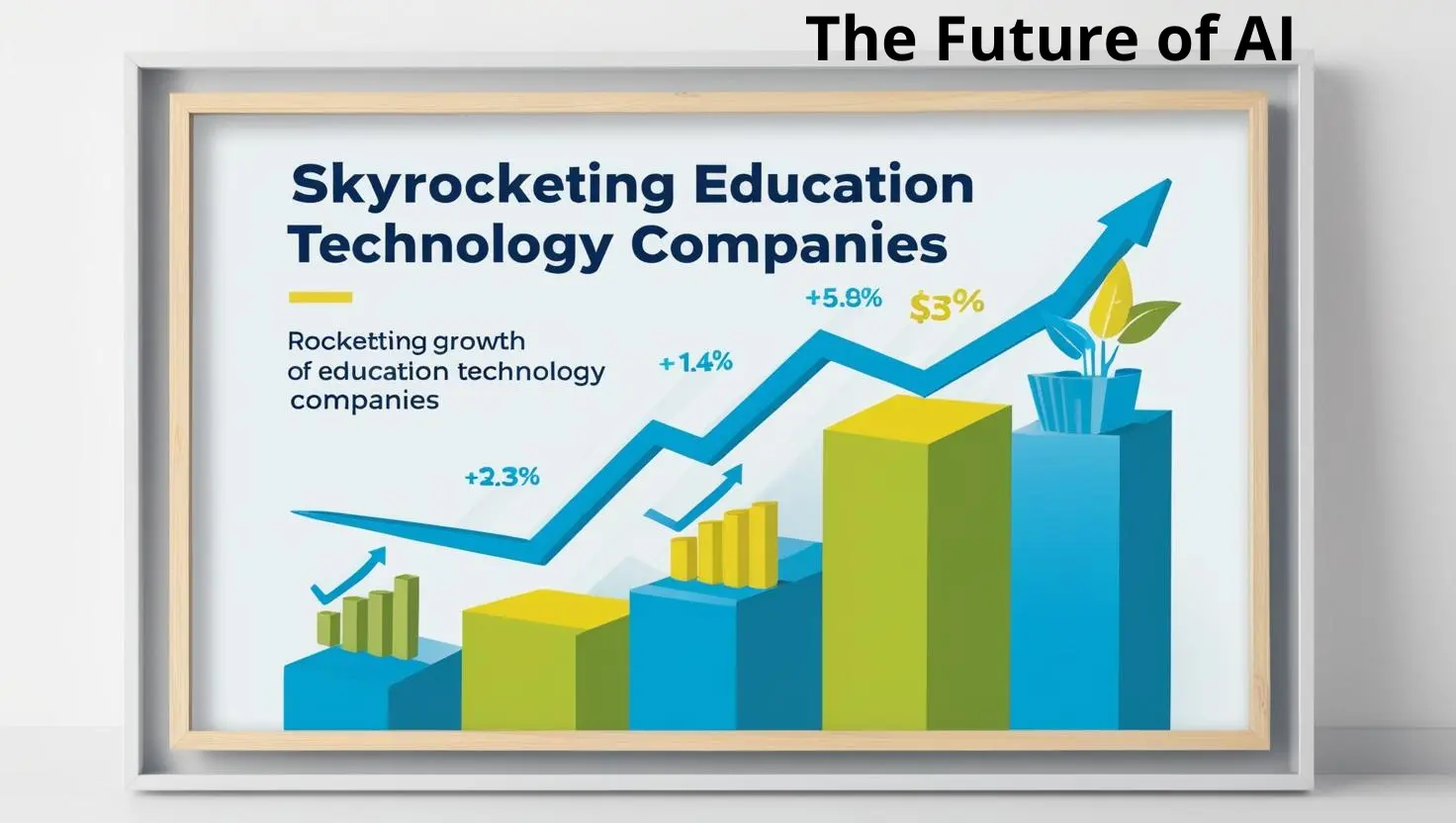Education Technology Companies are transforming the American education system. They create tools, software, and services that boost learning experiences for students of all ages. As more schools and parents demand engaging digital solutions, these businesses expand rapidly.
In this article, you will discover how these companies work, why they are growing so quickly, and how you can benefit from this exciting shift in teaching. Get ready to explore various options, from EdTech Firms to Virtual Education Companies, and discover practical tips for beginners who want to understand the future of education.

Understanding Education Technology Companies
Defining the Concept
Education Technology Companies develop digital products and services to support teaching and learning. These organizations, often called EdTech Firms, aim to improve learning with computer-based tools, online platforms, and other interactive media. Their goal is to make education more engaging, accessible, and personalized for students across the United States and beyond.
Many Educational Technology Providers focus on specific solutions, such as online platforms or specialized software. Others target broad markets, including K-12 schools, colleges, and corporate training programs. Regardless of their scope, these businesses harness technology to enrich educational opportunities.
Here are some ways these companies support the education sector:
- Designing interactive educational apps and games
- Creating virtual classrooms for remote learning
- Developing adaptive learning tools that tailor content to each student
- Offering digital assessments and performance-tracking tools
Key Subcategories
Not all Education Technology Companies work on the same product or service type. Different subcategories exist, each serving unique needs:
- Online Learning Companies
- Provide web-based courses and tutorials
- Promote flexibility by allowing students to learn anytime, anywhere
- E-Learning Companies
- Focus on digital learning programs and platforms
- Offer structured classes, quizzes, and projects online
- Learning Management System Providers
- Offer software platforms that organize course materials
- Monitor student progress and manage classroom activities
- Education Software Companies
- Develop specialized tools for grading, collaboration, or adaptive learning
- Streamline tasks for teachers and offer feedback for students
Each subcategory makes the digital learning experience smoother, more personalized, and more engaging for learners.
Why Education Technology Companies Are on the Rise
Global Trends
Modern societies rely on technology for communication, work, and leisure. Schools, therefore, must keep up with digital advancements. This shift fuels the growth of Education Technology Solutions worldwide. According to TechCrunch and EdSurge, the global market for digital learning is soaring. With reliable internet connections and smart devices now commonplace, more learners can access coursework online.
Meanwhile, parents and educators demand high-quality digital experiences for students. This demand fuels the creation of cutting-edge educational platforms, and education technology companies find themselves at the forefront of a booming industry that shows no signs of slowing down.
US Market Potential
The United States is among the biggest markets for technology-in-education companies. Public schools often receive federal or state funding to invest in technology. Private institutions also see the benefits of interactive tools. Moreover, American corporations rely on digital training programs to keep their workforce competitive.
Because of the strong economy and emphasis on innovation, the US remains a profitable arena for EdTech Startups and established firms. Competition is fierce, and businesses must offer user-friendly solutions with clear benefits.
Key factors driving US market growth include:
- Widespread broadband internet access
- Increased focus on STEM (Science, Technology, Engineering, Mathematics)
- Growing acceptance of remote learning
- Large-scale investments in emerging technologies
Types of Education Technology Solutions
Education Technology Companies supply a wide range of products. Let’s explore some of the most popular solutions, which have fuelled the industry’s skyrocketing growth story.
E-Learning Platforms
E-Learning Companies specialize in virtual course offerings. They build interactive programs and video tutorials. Students engage with online discussion boards, quizzes, and sometimes real-time video lectures.
These platforms transform traditional learning into a digital environment that encourages flexibility. Coursera, Udemy, and Khan Academy are prime examples of established Online Learning Companies that fit this profile.
Benefits of E-Learning Platforms
- Personalized course selection
- Flexible schedules
- Instant feedback and performance tracking
- Lower operational costs
Learning Management System Providers
A Learning Management System (LMS) is a platform that organizes educational content, tracks progress, and manages communication between students and teachers.
Learning Management System Providers design these platforms for schools, universities, and corporations. Popular LMS platforms include Moodle, Canvas, and Blackboard. They offer dashboards, grading tools, and analytics to assess student engagement.
Common LMS Features
- Course creation and content management
- Gradebook and progress reports
- Collaboration tools (chat rooms, forums)
- Integrations with third-party apps
Education Software Companies
Education Software Companies create tools that improve learning or simplify educational administration. Their products may include:
- Virtual whiteboards for interactive lessons
- Adaptive software that adjusts to student performance
- Administrative systems for enrollment, attendance, and billing
This category encompasses Technology in Education Companies that create targeted software for specific sectors, including special education support and vocational skills training.
Virtual Education Companies
Virtual Education Companies bring traditional classroom experiences to the digital world. They host live virtual classes, let teachers guide students in real-time, and provide interactive lab simulations. Many of these services became crucial during the COVID-19 pandemic. Today, they continue to offer valuable solutions for schools that want to serve remote learners or expand their reach beyond physical classrooms.
Standout Features of Virtual Education
- Live-streamed lessons with real-time interaction
- Online testing and proctoring
- Virtual labs for science and technology courses
- Video archives for replay and revision
How Education Technology Companies Improve Learning
Personalized Learning
Many Education Technology Companies leverage data analytics to create personalized learning paths. In this approach, each learner follows a pace and difficulty level that meets their unique needs. This strategy helps students stay motivated, leading to better retention and performance.
Consider adaptive software that presents advanced math problems to high-performing students while offering extra practice to those who need more guidance. This personal touch ensures every learner receives the right support.
Interactive Content
Traditional lectures can be passive, but EdTech Firms incorporate interactive content. Students become active participants through simulations, gamified quizzes, or collaborative tools. They practice real-world skills and apply theory to solve problems.
Here’s a quick breakdown of tools that boost interactivity:
- Gamified Lessons: Rewards and progress tracking mimic game mechanics, making lessons enjoyable.
- Digital Simulations: Virtual labs let students experiment with science concepts without costly or unsafe lab setups.
- Collaborative Platforms: Group projects and discussions encourage teamwork, even when students are not physically together.

Key Players in the Market
Established Giants
Numerous well-known Educational Technology Providers have a massive presence. They build high-quality learning platforms and often serve large institutions.
For example, Google offers G Suite for Education, which includes tools like Google Classroom. Apple supports education with iPads and various teaching apps. Microsoft also provides solutions, such as Teams for Education and various productivity tools.
EdTech Startups
On the other hand, EdTech Startups play a critical role in innovation. They frequently introduce fresh ideas and cutting-edge solutions to tackle specific challenges. Startups in the US often focus on AI-based tools, virtual reality learning experiences, or platforms targeting underserved communities. Because these emerging companies move quickly, they can shape new trends in digital education.
Some examples include:
- Companies that develop augmented reality tools for history or science classes
- Niche platforms helping special-needs students
- Services that connect tutors with learners in remote areas
Strategies for Growth in Education Technology Companies
Partnerships and Collaborations
Collaboration is key to thriving in a competitive market. Education Technology Companies often partner with publishers, universities, or corporate entities. Such alliances help distribute products to a wider audience and generate consistent revenue streams.
Common forms of collaboration include:
- Licensing deals with textbook publishers
- Joint ventures with teacher training institutes
- Partnerships with hardware manufacturers
Market Research
In-depth market research is essential for Online Learning and E-Learning Companies that want to stand out. Understanding regional education needs, student demographics, and teacher preferences can guide product development. Regular surveys, pilot programs, and feedback loops ensure solutions address real-world classroom issues.
Steps for effective market research:
- Identify the target audience (K-12, higher education, adult learners)
- Analyze competitor offerings
- Conduct focus groups with teachers, administrators, and students
- Track user engagement through analytics
Practical Tips for Beginners
Tools and Resources
You may wonder where to begin if you are new to Education Technology Companies. Here are a few practical tips to help you take the first step:
- Explore Free Trials: Many platforms offer a free version or trial period. Sample these tools before committing to a purchase.
- Check User Reviews: Seek feedback from educators and students using the platform. Real-life experiences often reveal the pros and cons of each tool.
- Attend Webinars: Frequent webinars discuss current trends and new software. Platforms like Eventbrite or EdSurge often list such events.
- Join Online Communities: Look for forums or LinkedIn groups dedicated to EdTech. You can learn from professionals, share ideas, and stay updated.
- Start Small: Start with a single tool or platform. Evaluate whether it meets your needs, and then gradually expand.
Common Challenges and Solutions
Though Education Technology Companies are booming, they still face obstacles. Identifying these challenges and addressing them is vital for long-term success.
- Digital Divide
- Challenge: Not all students have reliable internet access or devices.
- Solution: Companies can offer offline capabilities or partner with government initiatives to provide affordable hardware.
- Data Privacy and Security
- Challenge: Personal data, including student progress and test scores, must remain protected.
- Solution: Comply with regulations like FERPA in the US and ensure secure data encryption.
- Teacher Training
- Challenge: Educators may feel uncomfortable integrating new technologies into their existing classrooms.
- Solution: Provide training materials, video tutorials, and 24/7 support to help teachers adapt.
- Keeping Content Updated
- Challenge: Technology evolves, so content must stay current and relevant.
- Solution: Regularly update course materials and encourage teacher contributions to keep lessons fresh.
New Heading: Trends Shaping the Future of Education Technology Companies
Education Technology Companies must keep up with emerging trends to secure continued growth. By paying attention to the latest innovations, they can spot fresh opportunities. Below are some developments that shape the industry:
- Artificial Intelligence (AI) and Machine Learning
Adaptive learning platforms use AI to tailor lessons in real-time. This ensures each student receives material fitting their current level. - Virtual Reality (VR) and Augmented Reality (AR)
Immersive technologies allow students to explore historical sites or conduct science experiments in virtual environments. - Microlearning
Short, focused lessons that fit busy schedules are often used for professional development or corporate training. - Gamification
Game elements, like point systems or leaderboards, keep learners motivated.
New Heading: Comparing Key EdTech Solutions in a Quick Table
Below is a table comparing popular Education Technology Companies based on their primary focus, target audience, and standout features.
| Company Type | Target Audience | Standout Features |
|---|---|---|
| Online Learning Companies | K-12 & Adult Learners | Flexible scheduling, broad course catalog |
| E-Learning Companies | K-12 & Higher Education | Structured courses, in-depth assessments |
| Learning Management System Providers | Schools & Businesses | Course organization, progress tracking, analytics |
| Virtual Education Companies | K-12 & International | Real-time classes, interactive simulations |
| Education Software Companies | Schools & Tutors | Specialized tools, administrative solutions |
New Heading: Best Practices for Investing in Education Technology Companies
Beginners interested in investing in Education Technology Solutions should consider essential best practices to maximize returns and minimize risks:
- Research the Leadership: Companies led by experienced educators or technologists often deliver better products.
- Examine Market Reach: Explore whether the company focuses on local, national, or global markets. A wider reach can increase profit potential.
- Check Financial Stability: Look at funding rounds, revenue streams, and any history of consistent growth.
- Review Customer Satisfaction: High retention rates and positive reviews often signal a promising future.
- Stay Informed: Follow reputable tech news or educational blogs like EdSurge for insight on trends and upcoming disruptions.
New Heading: Actionable Steps for Educators Considering Technology Integration
Educators often serve as the bridge between Education Technology Companies and students. If you are a teacher, the following steps can guide effective adoption:
- Assess Your Classroom Needs
- Determine where technology can solve specific issues, such as improving student engagement or streamlining assessment.
- Test Run
- Pilot new tools with a small group of students or a single class. Collect feedback on usability and effectiveness.
- Gather Parental Support
- Communicate the benefits of EdTech solutions, such as improved engagement and personalized learning.
- Continuous Training
- Enroll in professional development opportunities. Encourage colleagues to do the same for consistent application.
- Evaluate Outcomes
- To measure progress, analyze test scores, engagement levels, and student feedback, and adjust strategies based on the results.
Conclusion
Education Technology Companies are reshaping how students learn and how teachers deliver lessons. Rapid technological advancements and a growing demand for online instruction have propelled EdTech Firms to new heights. From Learning Management System Providers to E-Learning Companies, each sector uniquely modernizes American classrooms. This movement is making high-quality education more accessible, interactive, and personalized than ever before.
Beginners can start by exploring simple tools and reading reviews from trusted sources. As you gain more knowledge, you may wish to invest in Education Technology Solutions or advocate for new platforms at your local school. Remember that challenges, such as digital equity and data privacy, require thoughtful planning and execution.
Despite these obstacles, the future remains bright for Education Technology Companies. Collaboration, innovation, and a clear focus on student needs promise to drive further success. Whether you are an educator, parent, student, or potential investor, now is a prime time to get involved. Don’t miss out on this skyrocketing growth and the life-changing impact these solutions bring to learners nationwide.
FAQ
What are examples of Education Technology Companies?
Companies such as Google for Education, Canvas, Coursera, and Khan Academy are well-known. They offer diverse services like virtual classrooms, learning platforms, and digital course materials.
How do you start an EdTech business?
Begin with market research to identify a specific need. Develop a minimal viable product (MVP), gather feedback from educators, and refine your solution. Seek funding through investors, grants, or crowdfunding, then scale gradually.
What is the difference between E-Learning and EdTech?
E-learning focuses on delivering educational content online. EdTech is a broader term that encompasses all technology-based tools and methods for enhancing learning, including E-Learning, hardware, software, and interactive applications.
Is online learning better than traditional learning?
Online learning offers flexibility and personalization, while traditional classrooms provide in-person interactions and structure. The best approach often depends on a student’s learning style and personal circumstances.
How can I invest in Education Technology Solutions?
You can invest by purchasing publicly traded Education Technology Company shares, participating in startup funding rounds, or joining venture capital firms focusing on EdTech Startups. Always research the company’s leadership, market scope, and financial stability before investing.
Final Note
As Education Technology Companies continue to innovate, keep an eye on emerging trends like AI-driven tools, Virtual Education Companies, and advanced analytics.
Stay informed, test new platforms, and watch this thriving field influence the future of learning. By embracing technology with thoughtful planning, educators and learners can unlock endless possibilities, ensuring no one misses out on the skyrocketing growth shaping our educational landscape.

